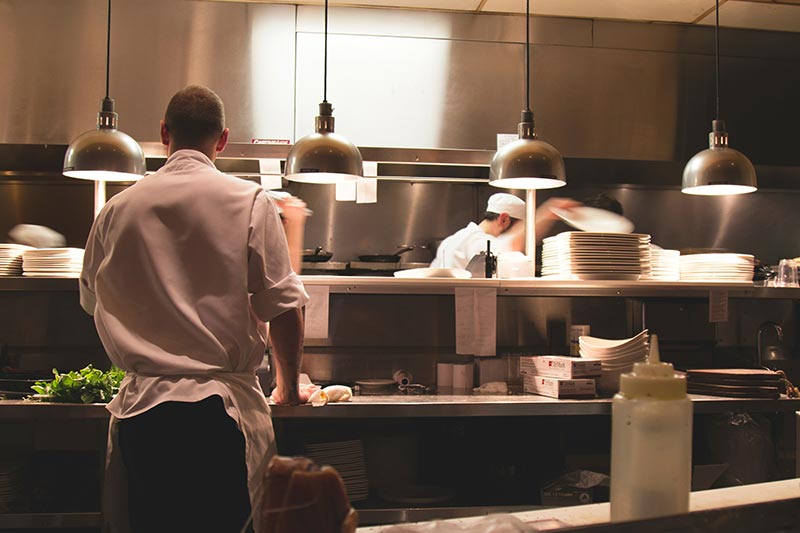Author: Kaya Stanley, Board Chair and CEO, CRMBC
Returning to work after an injury can be a daunting journey for employees, particularly in the fast-paced restaurant industry, where the physical demands of the job can often exacerbate the challenges of recovery. For restaurant owners, managing this transition is a delicate balancing act that involves supporting their employee’s health while ensuring the continued smooth operation of their business. This guide offers four pivotal tips to help navigate the complexities of the return-to-work process.
1: Understand and Prepare for the Return
Successfully reintegrating an injured employee starts with a comprehensive understanding of the potential risks of returning too early or too late. A premature return could aggravate the injury, while a delayed comeback may lead to deteriorating physical conditions such as muscle atrophy and joint stiffness. The objective is to tailor a return plan that aligns with the employee’s recovery progress, considering physical and psychological readiness. Effective communication between the employee, healthcare providers, and management is critical to ensuring a return-to-work plan that supports recovery while minimizing re-injury risk.
At Sam’s Bistro, line cook Maria sustained a minor burn. Sam, the owner, coordinated with Maria’s healthcare team to draft a return-to-work plan. Initially, Maria was reassigned to less hazardous tasks, such as ingredient prep and recipe development, easing her back into her cooking duties as her burn healed. This approach safeguarded Maria’s health and kept her engaged and productive.
2: Make Thoughtful Workplace Accommodations
Adapting the workplace to accommodate returning employees is essential. This could mean modifying job duties, adjusting schedules, or altering the physical workspace to meet the employee’s current capabilities. Considering the employee’s current physical state and the nature of their job duties can lead to creative solutions that allow participation without risking health, showcasing the employer’s commitment to their well-being and valuing their contribution to the team.
At The Riverside Grill, server James was recuperating from a knee injury. Lisa, the owner, assigned James the greeter role, allowing him to work seated and minimizing strain on his knee. This adjustment supported James’s recovery and highlighted the Grill’s commitment to employee care.
3: Prioritize Mental Health Alongside Physical Recovery
Acknowledging and addressing the emotional challenges faced by returning employees is crucial. Anxiety about re-injury or doubts regarding capability can significantly impact recovery. Employers can support their staff’s mental health by ensuring open lines of communication, providing access to mental health resources, and fostering an environment where employees feel valued and understood. Such support can significantly ease the transition back to work, contributing to a more positive and productive recovery process.
Elena, a sommelier at Vinoteca, was still determining her ability to resume her role following a hand injury. Management offered her flexible duties to alleviate her concerns, focusing on wine list curation and supplier liaison from her comfort zone. This consideration helped Elena maintain her professional identity and mental well-being during her recovery.
4: Use Return-to-Work Insights for Injury Prevention
Each return-to-work case provides valuable lessons that can enhance future injury prevention measures. By analyzing these experiences, restaurant owners can refine their safety protocols and training programs to mitigate similar risks. Engaging employees in safety discussions and encouraging them to share their experiences and suggestions can lead to more effective and comprehensive safety practices. This ultimately fosters a safer working environment for everyone.
Following pastry chef Javier’s return from a repetitive strain injury at Sweet Confections, owner Anita used the experience as a learning opportunity. A team discussion led to adopting ergonomic tools and updated safety training sessions, transforming Javier’s comeback into a springboard for creating a safer working environment for all staff members.
By understanding individual needs, accommodating limitations, supporting mental health, and learning from each return-to-work journey, restaurant owners can build a stronger, more cohesive team ready to face the restaurant industry’s challenges. Empathy, flexibility, and proactive safety measures are the keys to fostering a supportive and productive workplace culture.

Kaya Stanley is an attorney, published author, business owner, and highly sought-after strategic turnaround expert. Ms. Stanley serves as CEO and Chairman of the Board for CRMBC, the largest restaurant workers’ compensation self-insured group in California, and she is the Licensee for TEDxReno, an independently organized TEDx Event.
Throughout her 22 years of practicing law, Ms. Stanley has served as outside counsel for Wal-Mart and Home Depot. She was voted one of the country’s “Top 25 OZ Attorneys” by Opportunity Zone Magazine and published a best-selling book called “The Employer’s Guide to Obamacare.” Before that, she earned her master’s degree in social work and public policy, after which she worked with at-risk girls in Detroit and lobbied for women and families.








